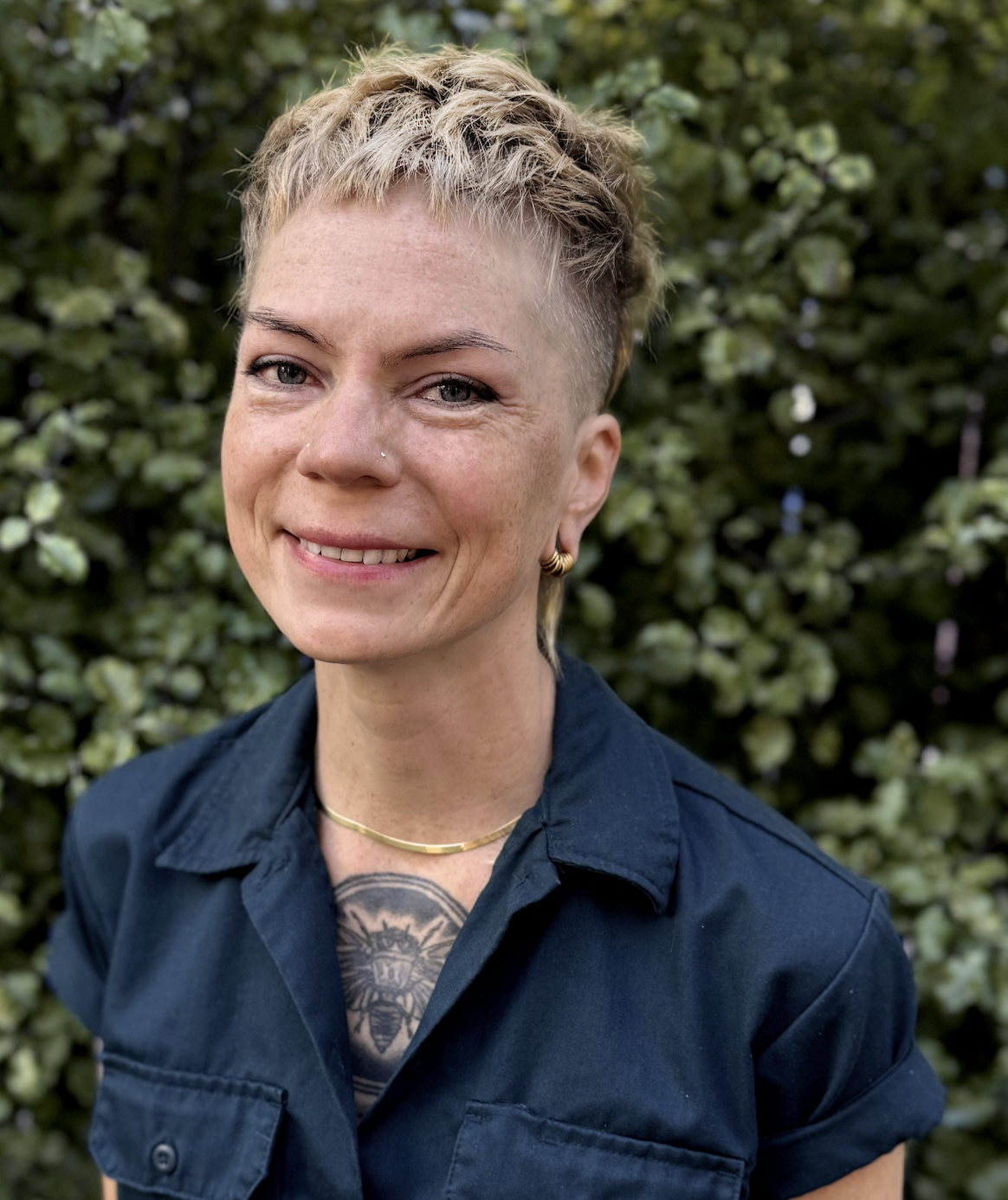
Lotus Lofgren is an Assistant Professor in the Department of Plant and Microbial Biology at UC Berkeley.
What microbiome-related work do you do?
Our lab leverages computational, -omic, and molecular approaches to study the mechanisms of fungal interactions, spanning scales from cellular ecology to interkingdom exchanges of infochemicals, nutrients, and toxins. To study these interactions, we focus on ectomycorrhizal fungi, which form critical symbiosis with trees, trading plant-derived carbon produced during photosynthesis, for fungal-scavenged resources like nitrogen. Ectomycorrhizal fungi have long been of interest to researchers studying ecology and evolution, but they can be difficult to work with in the lab. To address this, we’ve been developing a new model system, using the genus Suillus. We’ve compiled extensive genomic resources, culture libraries, and protocols for manipulating Suillus with and without their tree partners, advancing our understanding of partner specificity, host communication, and environmental adaptation. Using genomics, transcriptomics, and metabolomics, we’ve uncovered remarkable genetic and chemical diversity in the genus. We use this information to design controlled manipulative studies, that will help us identify the mechanisms that structure interactions between fungi and their hosts, their fungal competitors, and their microbial communities. By connecting genomics to phenotypes, and building a mechanistic understanding of ecological processes, we hope to build a holistic picture of fungal interactions that will inform both basic science and ecosystem management.
For those interested in your work, could you suggest one key reading from your recent papers?
I work with a fantastic team of researchers who collaborate via a group we call The International Suillus Consortium, a network of over 20 labs dedicated to the development of Suillus as a model genus for ectomycorrhizal biology, ecology, and evolution. If you’re interested in why Suillus is such an amazing target for model system development, and what we might be able to learn from having a well-developed model, check out our recent paper in New Phytologist: https://nph.onlinelibrary.wiley.com/doi/full/10.1111/nph.19700
Learn more about Lotus at www.LotusLofgren.com!